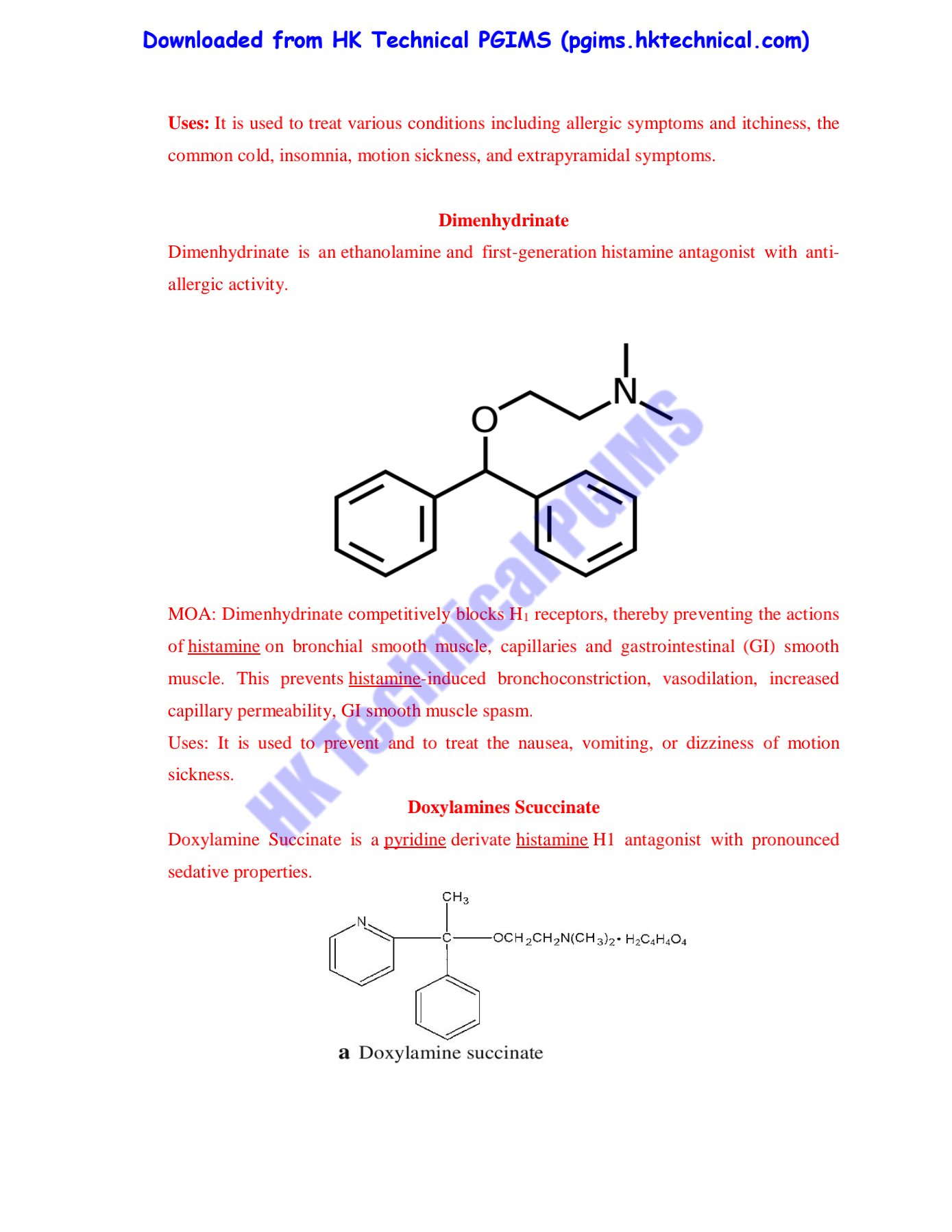BP501T Medicinal Chemistry
Unit-I
Antihistaminic agents: Histamine, receptors and their distribution in the
humanbody
H1–antagonists: Diphenhydramine hydrochloride*, Dimenhydrinate,
Doxylamines cuccinate, Clemastine fumarate, Diphenylphyraline hydrochloride,
Tripelenamine hydrochloride, Chlorcyclizine hydrochloride, Meclizine
hydrochloride, Buclizine hydrochloride, Chlorpheniramine maleate, Triprolidine
hydrochloride*, Phenidamine tartarate, Promethazine hydrochloride*,
Trimeprazine tartrate, Cyproheptadine hydrochloride, Azatidine maleate,
Astemizole, Loratadine, Cetirizine, Levocetrazine Cromolyn sodium
Description:
Antihistaminic agents
Antihistaminic agents
Anithistamines are drugs used to block the activity of histamines, by preventing the ability of histamine to bind to histamine receptors. These agents are therefore referred to as histamine antagonists. Antihistamines do not stop the formation of histamine nor do they stop the conflict between the IgE and antigen. Antihistamines are divided into two major subtypes. The first subtype is called H-1 receptor antagonists or H-1 blockers. This subtype of antihistamines is used to treat allergy symptoms. The second subtype is called H-2 receptor antagonists or H-2 blockers.
H1-antihistamines: H1-antihistamines refer to compounds that inhibit the activity of the H1 receptor. Clinically, H1-antihistamines are used to treat allergic reactions and mast cell-related disorders. H1 antagonist are lipophilic in nature, therefore, they cross blood brain barrier easily and produce sedation.























Post a Comment
0 Comments